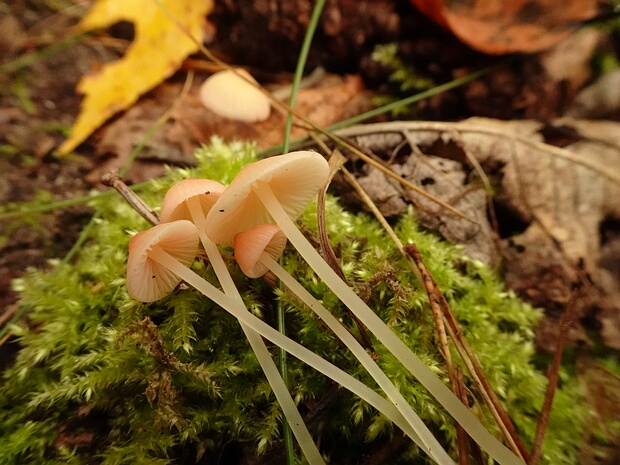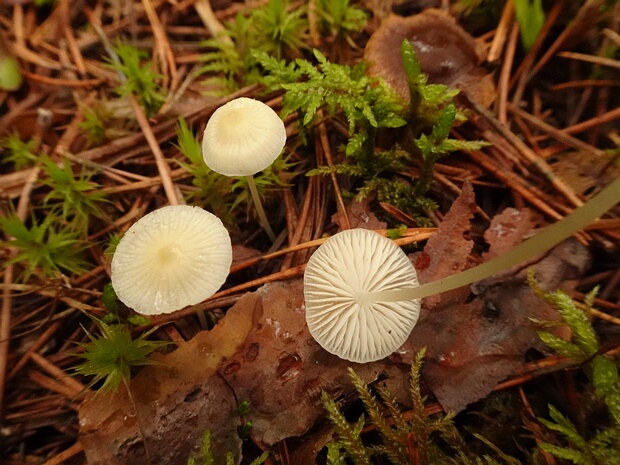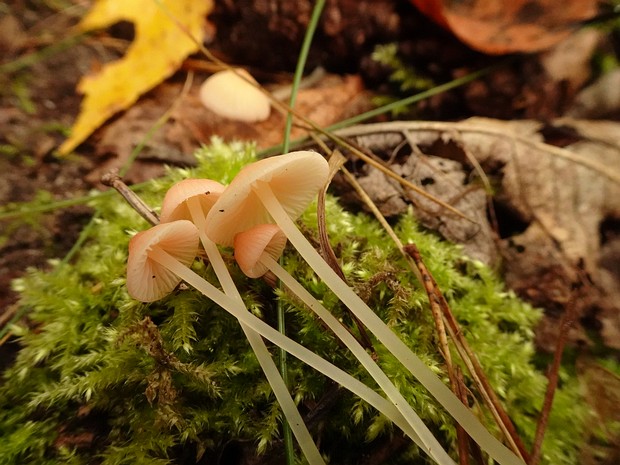Porotheleaceae - Поротелиевые - Porotheleaceae Family - Porotheleaceae Familie 9/18-21/22
The Porotheleaceae is a family of fungi within the order Agaricales. This family is relatively small and less known compared to other fungal families. The Porotheleaceae contains several genera, including Porotheleum and Phaeomarasmius.
Mushrooms belonging to the Porotheleaceae family are characterized by their small to medium size, brown or dark brown coloration, and often inconspicuous appearance. These fungi generally have a convex to umbilicate cap, with a smooth or finely fibrillose surface.
The gills of Porotheleaceae species can be adnate, adnexed, or sometimes seceding. The spore print color varies from white to pale brown, depending on the species. The stipe is usually slender and cylindrical, with a smooth or slightly fibrillose surface.
The spores of Porotheleaceae fungi are generally smooth and ellipsoid to oblong in shape. The size of the spores can vary significantly depending on the genus and species.
Members of the Porotheleaceae family are typically saprobic, decomposing organic matter such as leaf litter, wood debris, and other plant materials. They play a vital role in breaking down organic material and recycling nutrients within ecosystems.
The Porotheleaceae family has a global distribution, with species found in various regions of the world, including North America, Europe, Asia, and the Southern Hemisphere. The fruiting period for these mushrooms generally occurs from late spring to autumn, depending on the region and species.
Porotheleaceae fungi can be found in various habitats, including forests, grasslands, and other areas with decaying plant material. They are often associated with specific substrates, such as decaying wood, leaf litter, or other plant debris.
Many species within the Porotheleaceae family are inconspicuous and challenging to find due to their small size and cryptic coloration. This characteristic has likely contributed to the limited information available on the biology and ecology of these fungi.
There is currently limited information available regarding the edibility or toxicity of Porotheleaceae species. As a result, it is generally advised to avoid consuming these mushrooms due to the potential risk of toxicity or adverse reactions.
The chemical composition of Porotheleaceae species is not well understood, and few studies have been conducted to investigate the presence of bioactive compounds or other chemicals within these fungi.
It is possible that Porotheleaceae species may have potential ecological, industrial, or medical applications. However, more research is needed to better understand the biology, ecology, and chemistry of these fungi to determine their potential uses and benefits.



